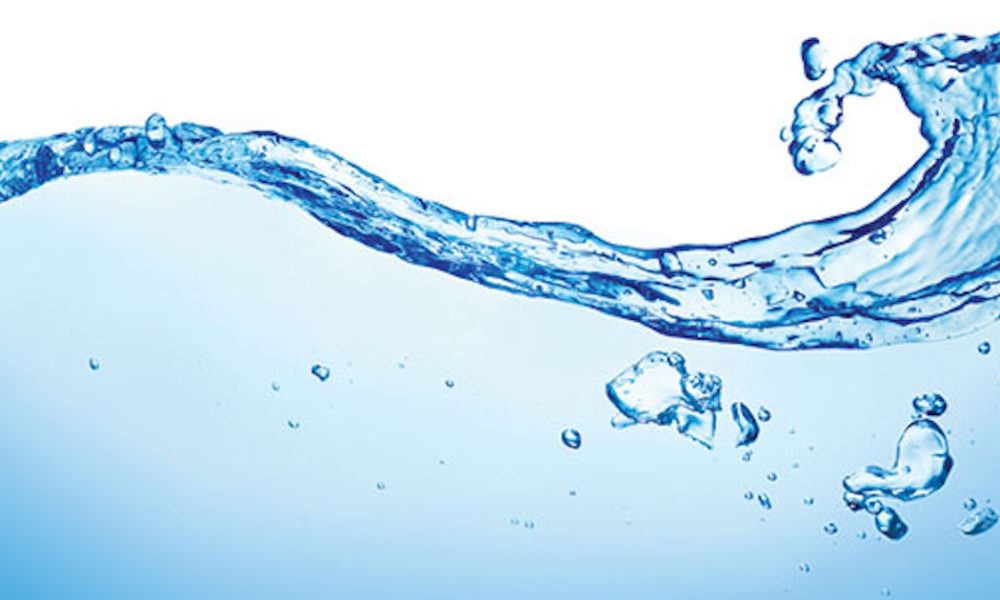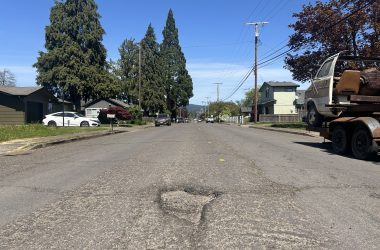
Water and sewer rate changes in Creswell has been a hot topic lately, as city council has been mulling over a recommendation on whether to switch to a tiered water rate system as recommended by the Water Rate Advisory Committee (WRAC) for the 2018-19 fiscal year.
The recommended rates, if adopted, are to be effective beginning July 1.
The new design would reduce the monthly base rate for a three-quarter-inch meter by $1.65 and would add a rate for industrial users of $2.09 per hundred cubic feet (ccf). This change would also disallow seasonal residents from shutting off their water connections during the winter.
By definition, tiered rates are designed to reward customers who use less water by charging lower rates for water used in the lower tiers. The more water a customer uses, the more usage moves into the higher tiers, which results in higher charges for water use.
”The concept of the base rate is that everyone shares the fixed cost of the water system,” City Finance Director Jim Piper said. The usage cost reflects the variable costs that include such things as the chemicals and electricity used to produce clean water, and covers the debt service and wages to maintain the plant before water is even processed. The base cost reflects the fixed cost of having the water treatment plant and the 30 miles of pipes to serve water to homes and businesses.
Other neighboring communities already have this structure in place, Piper said, and noted that rates are altered based on inflation, which averages three percent.
”This year, we’ll see a little more as cost of living rises (at four percent) and part of that is because of housing (development) and other pressures,” he said, noting that four percent is still fairly conservative and is not jeopardizing the City’s water reserves.
”Based on the analysis for the WRAC, and projecting out our known costs from our last audit, as well as an inflation rate of four percent, the actual cost of the base service came out to $36.64, which is what we’re proposing the base rate to be,” Piper said. ”If we’d raised our current base rate, $38.29, by four percent, the base rate would have been $39.82.”
In determining the tiers, Piper said that the City can determine as many tiers as they want.
”Typically, simpler is better, so we went with three tiers,” he said.
In the first tier of the proposed rates, usage from 0 to 800 cubic feet (cf) would cost $1.81 ccf. The first block of the proposed rate structure is the lowest per-unit charge before additional costs are incurred for excessive usage, Piper said. ”For the cost per unit produced, the lowest unit cost is $1.81 per hundred cubic feet. As you run equipment longer, those costs increase incrementally.”
Eight hundred cf is the standard necessity for basic sanitary needs for a household of a typical family of four or five people, as suggested by the Oregon Department of Environmental Quality (DEQ). That amount translates to roughly 6,000 gallons of water, Piper said.
Piper said some people’s bills may go up, but if you use between 500 and 20,000 cf per month, many should see a monthly decrease due to the change in the rate structure.
”Recovering the costs to serve on the first 300 cf of water usage from all users will reduce water charges for about 75 percent of the users,” Piper said. ”Residential users versus commercial users is really addressed that in the first tier. They are paying their fair share. In future years, inflation will increase their bills, but this year, many people will see a decrease because of the restructure.”
In the second tier, from 801 to 20,000 cf, it would cost $3.94 ccf, which is a $2.13 increase from the first to the second tier. What makes the second tiered rate jump is a result of its wide scope, and is also a result of users with above-average usage – such as a having to maintain and fill a pool or watering an extensive garden – and also covers a multifamily household, Piper said.
”The coverage, from 801 to 20,000 cf, covers a great deal of users,” Piper said. ”The second number is an average for the usage groups, so instead of having 10 more tiers in that section, we just have one group.”
So, why does it cost $1.81 ccf, but the City is charging $3.83 ccf?
”The $3.83 is really just an average of the costs to produce that water over all the users and also covering the costs of that first 300 cubic feet of water,” Piper said.
In the third tier, anything over 20,000 cf, it would cost $4.21 ccf. This tier is designated for exceptionally high users, which translates to about 150,000 gallons per month. This tier is charged at a higher rate to recover some of the costs for servicing that kind of user.
”That’s a significant amount of water,” Piper said. ”It’s well beyond a pool and is usually multi family households – roughly 25 homes’ worth of water.”
These users are typically not sharing the base costs considering the consumption that is being used by the meter, City Administrator Michelle Amberg said.
So now we’re talking a single meter that’s paying a single base rate and, ”you have a user who is using multiple households’ worth of water, but is paying one base rate; so, it kind of lends itself to not paying its share in the base rate,” Piper said.
”For example, to consume this much water it is likely that a three-inch meter is being used. The three-inch meter is currently charged $415 per month for base rate charges. The combined base rate for 25 residential homes using a three-quarter-inch meter totals $957 per month,” Amberg said.
”The city could raise the base rate for the three-inch meter. However, that would not be fair to the three-inch meter that only uses 10,000 cf per month. Thus, this can be addressed in the tier rate,” she said.
”So the way you address that is then that group pays an additional premium for their water,” Piper said.
This tier would also be set in place in anticipation of urban renewal.
”Industrial users bring jobs and substantial property tax value to the local economy,” Piper said. ”Other cities in our area have priced industrial water use very competitively. For example, Cottage Grove can provide 100,000 cf of industrial water per month on a three-inch meter for approximately $1,900. Eugene and Springfield are comparable. However, Creswell charges approximately $4,200 for the same amount of water.”
These rates were proposed for customers outside the city limits:
▲ In the first tier, from 0 to 800 cf, it would cost $2.61 ccf.
▲ In the second tier, from 801 to 20,000 cf, it would cost $5.57 ccf.
▲ In the third tier, anything over 20,000 cf, it would cost $6.07 ccf.
WHAT ABOUT
SEWER?
Sewer would see a monthly base rate increase of $1.25.
Sewer will not have a tiered rate because the sewer is not metered, Amberg said.
”The water meter is the best predictor of sewer usage,” Amberg said. ”However, not all water goes into the sewer. Therefore, winter averaging is used in the summer months. Sewer base rates also include a per-dwelling unit base charge that addresses multiple households being served on a single meter.”
LOOKING TO
THE FUTURE
While tiered rates may be a temporary fix, the City of Creswell is also looking into getting more water rights.
”Two of the things we’ve looked at are water reserves behind Dorena Reservoir and the other piece is bringing Creswell wells back up,” Piper said. ”We’re weighing our costs because it’s looking like we can do one or the other. So, that’s something that will come before council in the future.”
Bringing the wells back online could be a good possibility, he said, noting that it would give the City the capacity they currently do not have.
”Part of that water master plan is addressing the population growth projections, too” he said.
CALCULATE YOUR
OWN RATE
To calculate what your water rates would be under the tiered system, users are encouraged to visit the City of Creswell website and use the Utility Bill Calculator to estimate their costs with the proposed rates.
The Excel program must be used for the calculator. To do so, click on ”enable editing” at the top of the page and enter the base rate and water usage from your most recent utility bill and the calculator will automatically calculate the projected tiered water and sewer bill.








